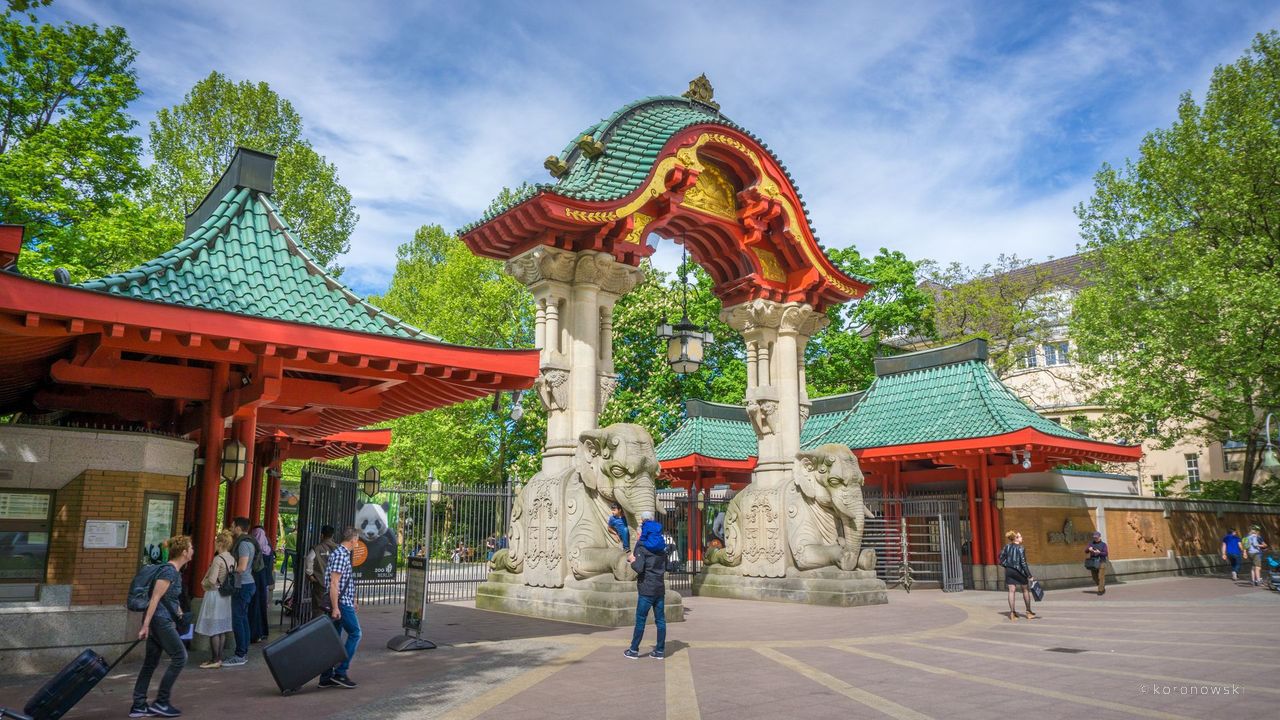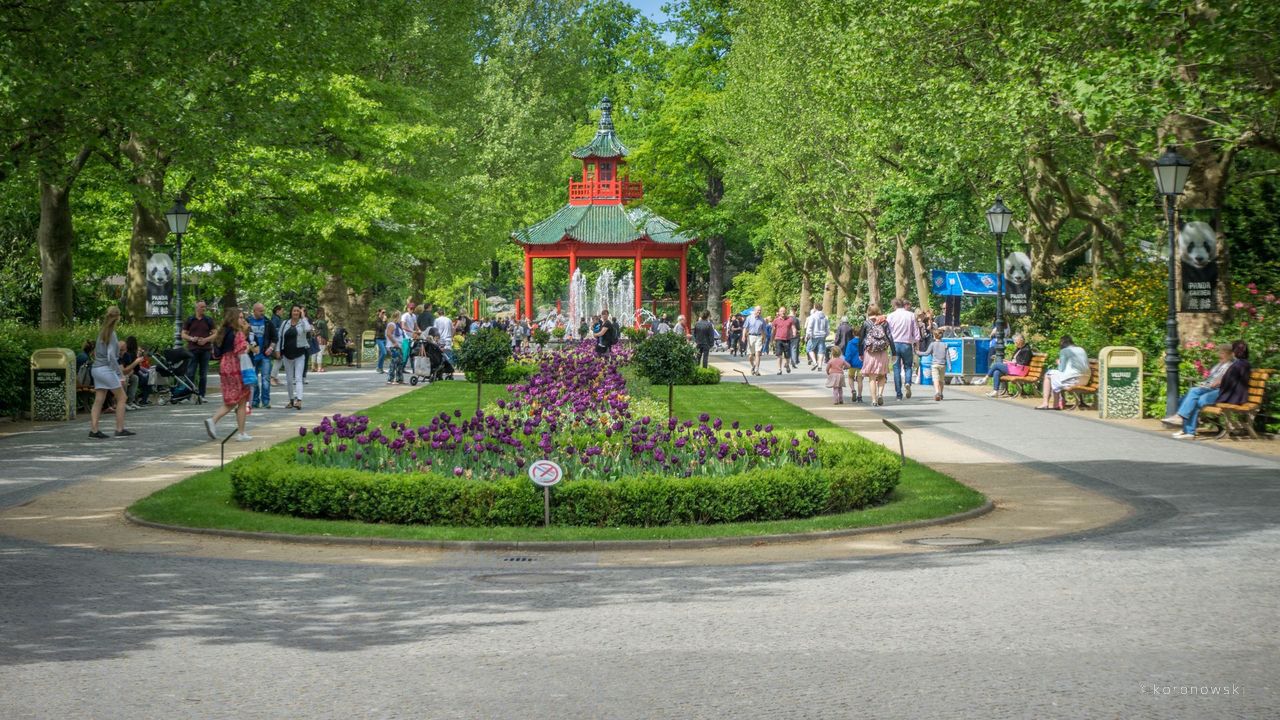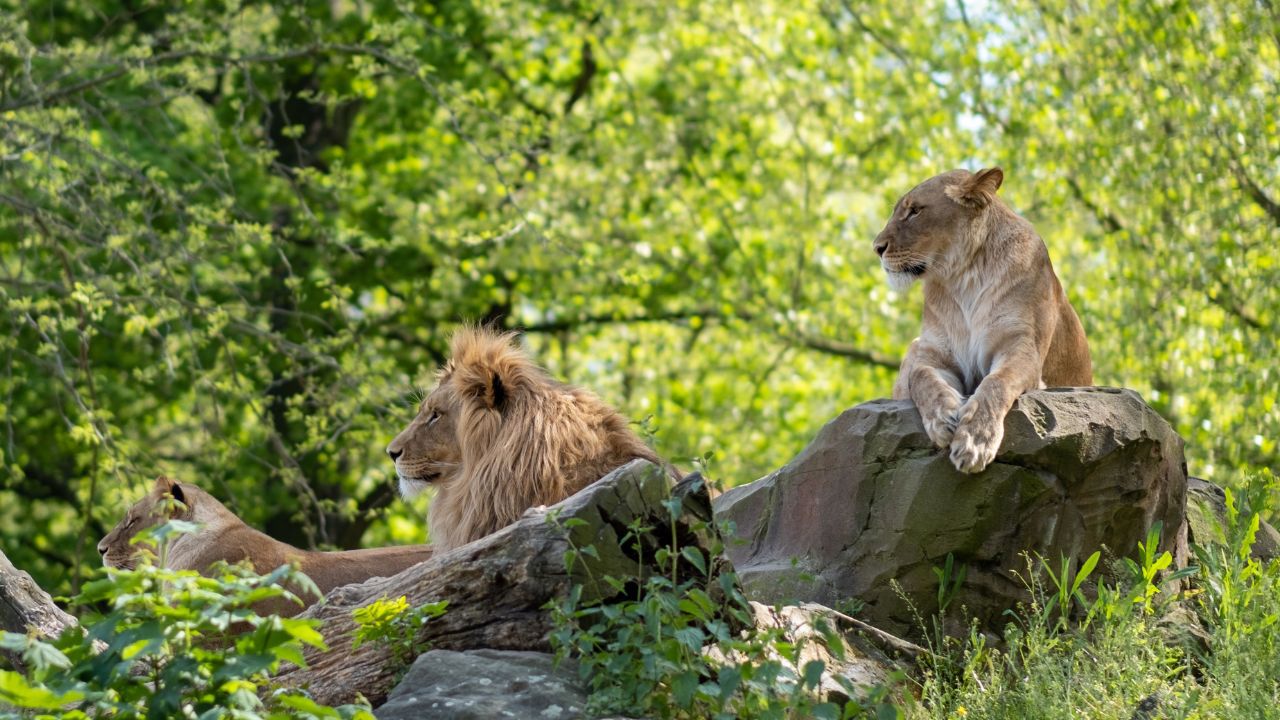Zoos and wildlife parks

Visit the Berlin Zoo
Berlin Zoo is the oldest zoo in Germany and the richest in species in the world. Around 14,000 animals romp around on a 33-hectare site.
The Berlin Zoo is Germany's oldest zoo and also the most species-rich in the world, home to around 14,000 animals on a 33-hectare site.
But you can not only marvel at the animals at Berlin Zoo, there are also shows at feeding times, for example at the Californian sea lions, special events like Whitsun, where You can book guided tours on the subject of species protection and many other topics or celebrate the children's birthday or how about your "favourite animal visit".
The zoo also has a huge playground for children, restaurants and rest areas. At the end of this article, we would like to tell you an exciting story about the foundation of the Berlin Zoo.
The Berlin Zoo
Location & Sightseeings
The traditional Berlin Zoological Garden is located in the middle of the City-West, near the station Zoologischer Garten. Not far from the prestigious Kurfürstendamm. Opposite is the Europa-Center (shopping centre) and the Weltkugelbrunnen (also popularly known as the "Wasserklops"). The Europa Center houses around 70 shops and the Berlin Tourist Info. Along the Kurfürstendamm you will find the flagstores of well-known labels, shops of international brands and well-known names.
History of the Berlin Zoo
The foundation
In 1841, zoologist Martin Hinrich Lichtenstein persuaded the Prussian king not only to grant him a loan, but also to make part of his land available to his pheasantry at Berlin's Tiergarten free of charge. In return, Lichtenstein wrote a memorandum to the King. Unfortunately, the text of this memoir was lost in 1877. Certainly, we know, however, that Alexander von Humboldt presented them to the King, who made the foundation of the Zoological Garden possible with "The Most High Cabinet Order of 31 January 1841".
On August 1, 1844, the Berlin Zoological Garden was opened as the ninth zoo in Europe. The first director was Martin Hinrich Lichtenstein. After Lichtenstein's death, Heinrich Bodinus took over the post of zoo director. His first exotic sight was an antelope house in 1871. An elephant house, an ostrich house, a wading bird house and the elephant gate were added. Pavilions and restaurants were built on the grounds of the zoo, inviting visitors to linger. In 1885, the veterinarian Max Schmidt, who replaced Bodinus, introduced an orderly bookkeeping and an animal inventory. After Max Schmidt died, Ludwig Heck took over the management of the zoo in 1888 and expanded the animal population.
His son Ludwig Heck jun. became manager in 1930 and in 1932 he took over the management of the zoo and in 1939 forbade Jews to enter the zoo. Unfortunately, the bombs of the Second World War did not stop at the Berlin zoo. Only 91 out of 3715 animals survived the air raids of the Allies. Zoologist Katharina Heinroth, wife of Oskar Heinroth (Director of the Aquarium) ran the zoo from 1945 to 1956 and was then the only zoo director in Germany. She was very committed to the reconstruction, the antelope house was renovated and a hippopotamus house and an elephant house were newly built.
After that, Heinz-Georg Klös took over the management in 1956 and pushed the further reconstruction and expansion. Monkey houses, a birdhouse, bear enclosures, predator house with night animal department were built. Klös also had animal sculptures set up in the zoo. The elephant gate, lion gate and giraffe house have been reconstructed and renovated. The Elephant Gate is for us one of the most important entrances to a sight in Berlin. Heinz-Georg Klös founded the zoo school. Many animals had and still have their homes in the Berlin Zoo: like Bao Bao, a large panda bear that was the only one in German zoos until August 22, 2012, the hippos Knautschke and Bulette, the giraffe Rieke and who does not know him, the polar bear Knut. A hand rearing of the then zookeeper Thomas Dörflein. Unfortunately, they're both no longer with us. In April 2016 the female gorilla Fatou celebrated her 59th birthday. It is the second-oldest lowland gorilla in human custody and has been home to the zoo since 1959. And if you still don't have enough, then visit the "Bikini House", which is right next to the zoo. From there you can see the monkey rocks in the zoo from a huge panoramic window.
An excursion to the Berlin Zoo is always worthwhile and is an experience for young and old.
Address, Opening Hours …
Address: Hardenbergplatz 8, 10787 Berlin
Opening Hours Throughout the Year:October 28 - December 31
9:00 AM - 4:30 PM
Last Entry: 3:30 PMJanuary 1 - February 25
9:00 AM - 4:30 PM
Last Entry: 3:30 PMFebruary 26 - March 24
9:00 AM - 6:00 PM
Last Entry: 5:00 PMMarch 25 - September 22
9:00 AM - 6:30 PM
Last Entry: 5:00 PMSeptember 23 - October 27
9:00 AM - 6:00 PM
Last Entry: 5:00 PMAdmission Fees:Entrance: €16, reduced €7.50
Zoo + Aquarium: €24, reduced €11Transportation:S+U Zoologischer Garten Station (S5, S7, S75, U9)
U Kurfürstendamm Station (U1, U9)
Bus: Zoologischer Garten Station (100, 109, 110, 200, 204, 245, 249, M45, M46, M49, N1, N10, N2, N26, N9, X10, X34, X9)
Weather
At a glance
The Berlin Zoo is Germany's oldest zoo and also the most species-rich in the world, home to around 14,000 animals on a 33-hectare site.
Impressions
All offers at a glance.
With the best tips for Berlin at Welcome to Berlin



